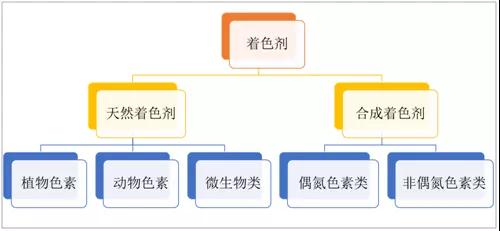
GUANGDONG KELONG BIOTECHNOLOGY CO., LTD.
Add: No.5-17 and No.5-32, South area of Qibao Industry and Trade, Huicheng, Xinhui, Jiangmen, Guangdong, China
Tel:+86-750-6978788
Fax:+86-750-6978868
Wechat: 13828063050
Website: http://revistapescaperu.com
Email: export@kelongbio.com
marketing@kelongbio.com
In the hearts of the "food" people who love life,
The “scented and delicious” food is the real food.
visible,
Color is an important indicator of food.
And the coloring agent satisfies people's good expectations for the color of food.
Increase appetite.
What are the types of colorants?
What about their security?
Let's take a look~
A colorant that imparts and improves color
Colorants (also known as pigments) are food additives and are a class of substances that impart color to foods and improve the color of foods. At present, there are more than 60 kinds of food coloring agents commonly used in the world, which can be divided into two categories: food natural coloring agents and food synthetic coloring agents according to their sources and properties.
Food natural colorants are mainly derived from natural pigments and are classified into three categories according to their source:
※ Plant pigments (eg beet red, turmeric, beta-carotene, chlorophyll);
※ animal pigments (such as: shellac red, cochineal red);
※ Microorganisms (eg red yeast red);
The food synthetic colorants are mainly synthesized according to certain special chemical groups or chromophore groups, and can be divided into:
※ Azo pigments (such as: amaranth, carmine, sunset yellow, lemon yellow, new red, temptation red, acid red)
※ Non-azo pigments (eg red erythro, bright blue).
Said a bunch, maybe some people have been fainted, so Xiao Bian specially prepared a classification structure for everyone, do not like to read the long story of the baby directly look at the following picture:

Clear and strict regulations
China's "Food Safety National Standards for the Use of Food Additives" (GB2760-2014) clearly stipulates the variety, scope of use and limits of use or residues that allow the use of food colorants.
As long as the colorant is used in the food, the food label must be marked. So knocking on the blackboard: Curious babies can look at the food labels to find out the specific colorants added to the food!
Reasonable use is safe and secure
The food additives allowed in China's standards (GB2760), whether natural or synthetic, have been evaluated for safety by safety. It is safe to use them in accordance with the standards and corresponding quality specifications.
For the food purchased in the formal channel, the safety of the colorant, the consumer does not need to worry too much~
Excessive use and excessive use are illegal
However, there are also phenomena in which individual food producers use a coloring agent in an over-range and over-restricted amount. The reasons include that some manufacturers do not understand the relevant standards, lack of corresponding technical management; or individual manufacturers deliberately want to save production costs, or unilaterally pursue the color of the product.
The use of super-range and ultra-limited additives is a food safety violation that is severely cracked down by China's food regulatory authorities.
Suggest
Choose a regular sales channel to buy food;
Think about colorants rationally, and don't overly pursue the bright color of food.